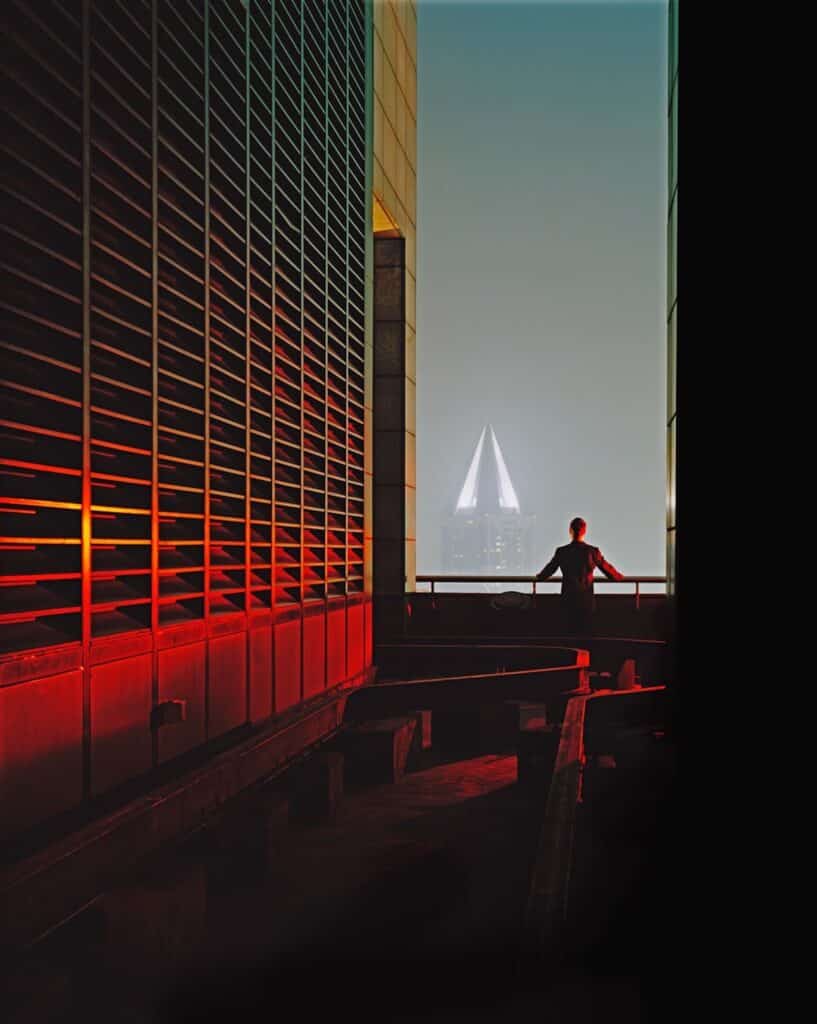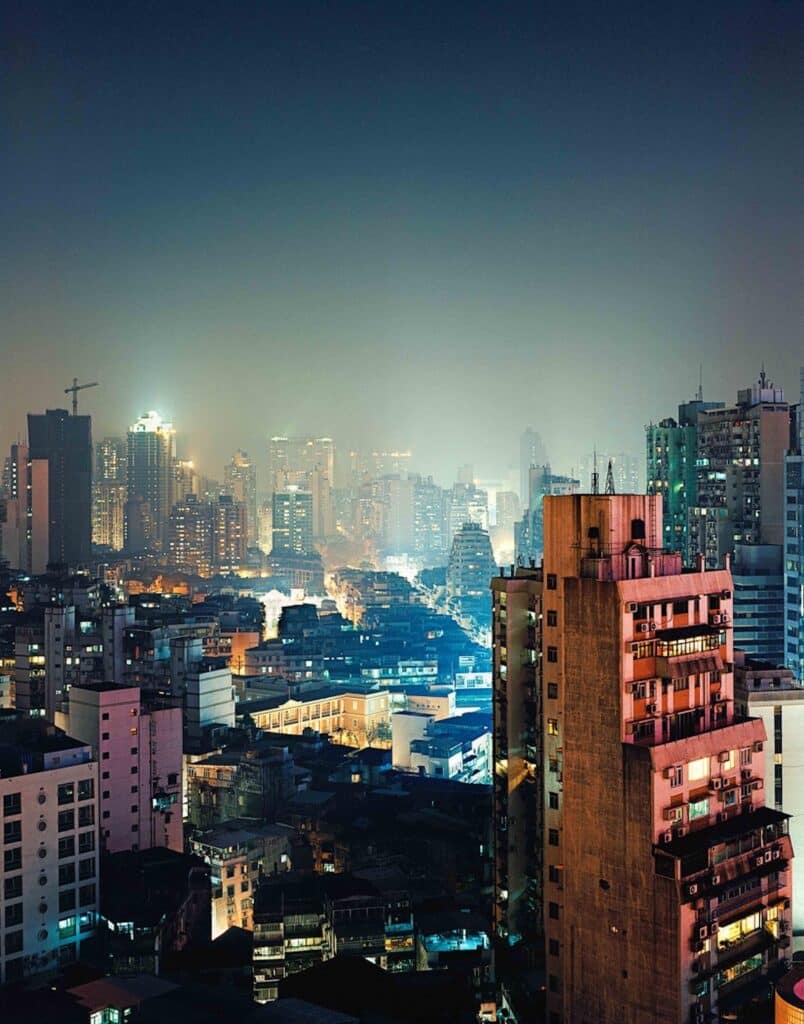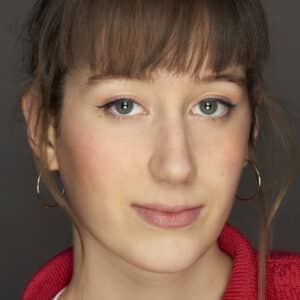An urban experimenter, Floriane De Lassée has photographed city environments for over a decade. Following her first book, released in 2008, she was spurred by the lockdowns to publish the rest of her work. People gathering at the windows reminded her of her life in New York, in 2003. Then a student at the International Center of Photography, De Lassée was confronted with the immensity of the city that never sleeps. Alone, she looked out the window. She was transfixed by the spectacle of neighborhood life outside. “What are their lives like?,” the photographer wondered. Gradually, her musings materialized in art.
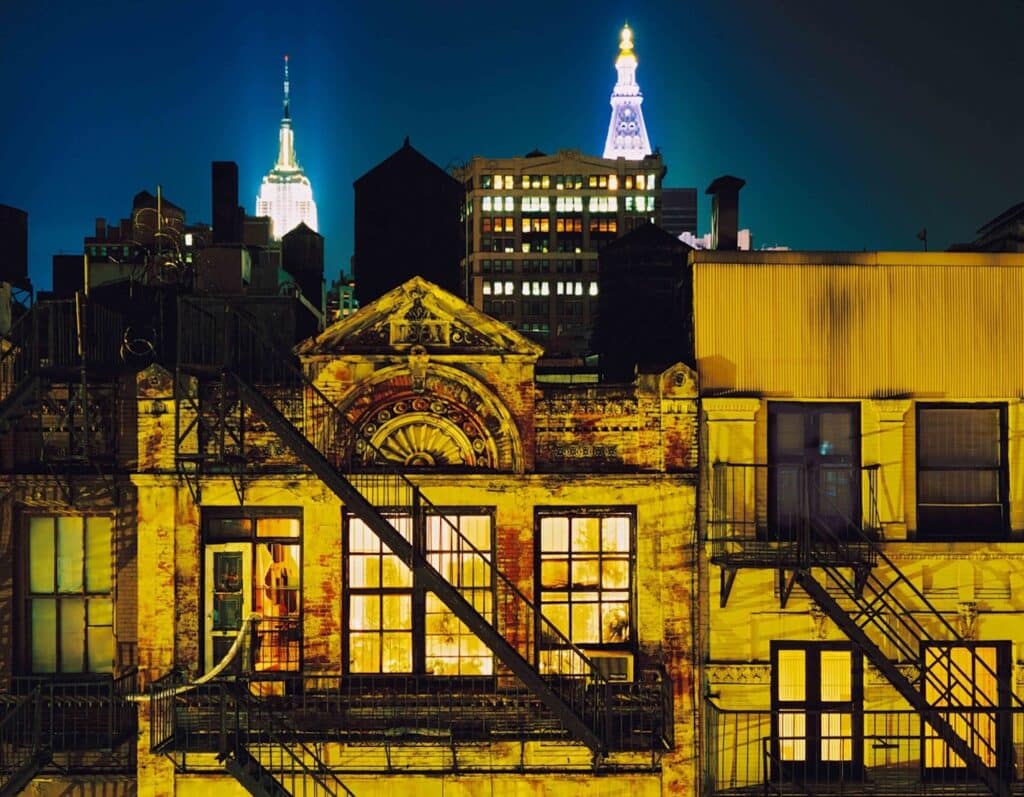
She began creating scenes with her friends. She spent nearly two years roaming around the city after sunset, with the night as a refuge. “After two years in New York, I thought the series was over, and I would return to France,” the artist said. She exhibited in Beijing a few months later. The series was a real success. While she was still at school, her work traveled between Paris, New York, and Shanghai.
From her small apartment to the ends of the world, De Lassée travels with her view camera. Whether it’s a mad gamble or nostalgia, the young woman is passionate about her method: “The result is completely different. The image comes out extremely structured, and above all, it is composed in reverse. It allows you to get away from the subject and focus solely on the construction of the image. Exposure times can be as long as thirty minutes.” The photographic camera, directly inspired by the camera obscura, reveals the inverted image of the observed reality. If this system of shooting offers the greatest freedom in the creation of the image, it implies the use of a photographic time quite different from that to which we are accustomed by modern cameras. These long exposures are necessary to obtain nuanced colors and pastel shades worthy of a painting. For De Lassée, her technique was key: “And then there is a double meaning: at night, the room is solitude.”
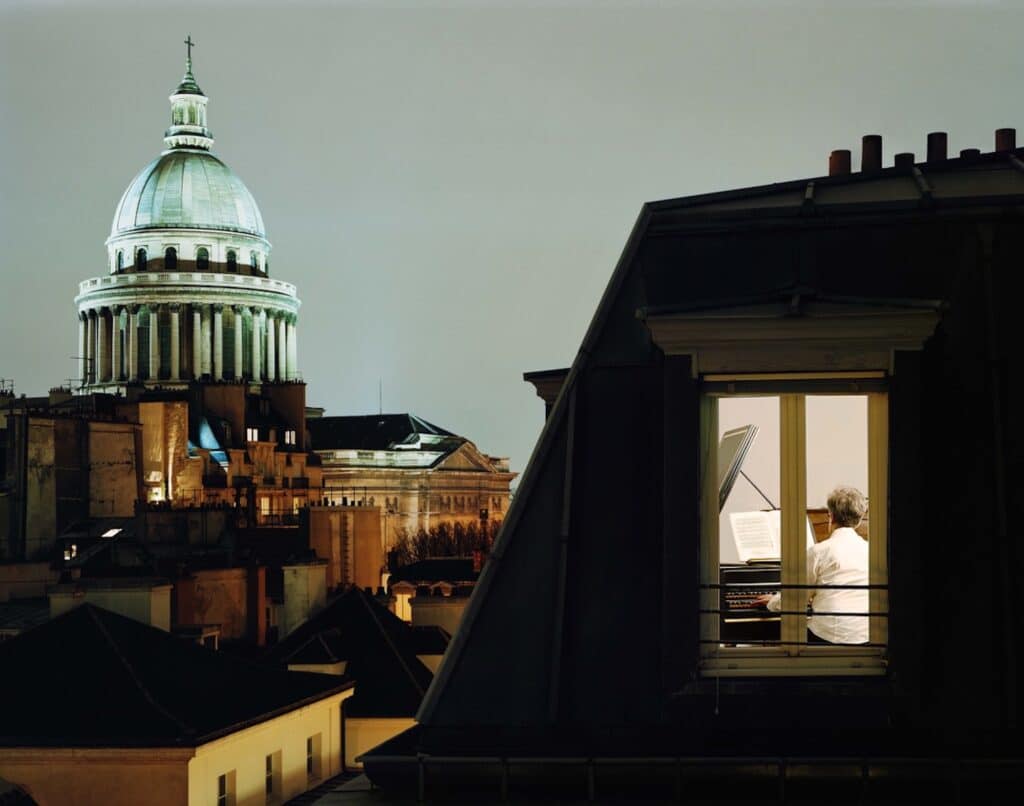
Looking through the window
A border between inside and outside, the window represents an ideal observation post, like in Hitchcock’s cult film Rear Window. “My neighbor came home at 8 p.m. today. She had been to her yoga class.” Breaking the privacy of the interior, De Lassée muses: “For me, looking out the window satisfies my curiosity about my neighbors. It’s not so much voyeurism, as about the desire to know whether our lives are alike. Even if we live next door to each other, we may have totally different attitudes and routines.”
A frame inside a frame, the window turns into a screen. As in Tati’s Playtime, the window displays the intimacy of an interior to the passersby. Anonymous silhouettes become actors in the story of the city. The smooth surfaces recall Fritz Lang’s Metropolis. The surreal atmosphere evokes Andrew Niccol’s Gattaca. The city’s throbbing is the backdrop to this “inside view.” However, this effect was not achieved by design. “When I started this series, I watched very few films,” confides De Lassée, “Sofia Coppola’s Lost in Translation had just been released three months later. The closing sequence was filmed at a location that I myself had photographed.”
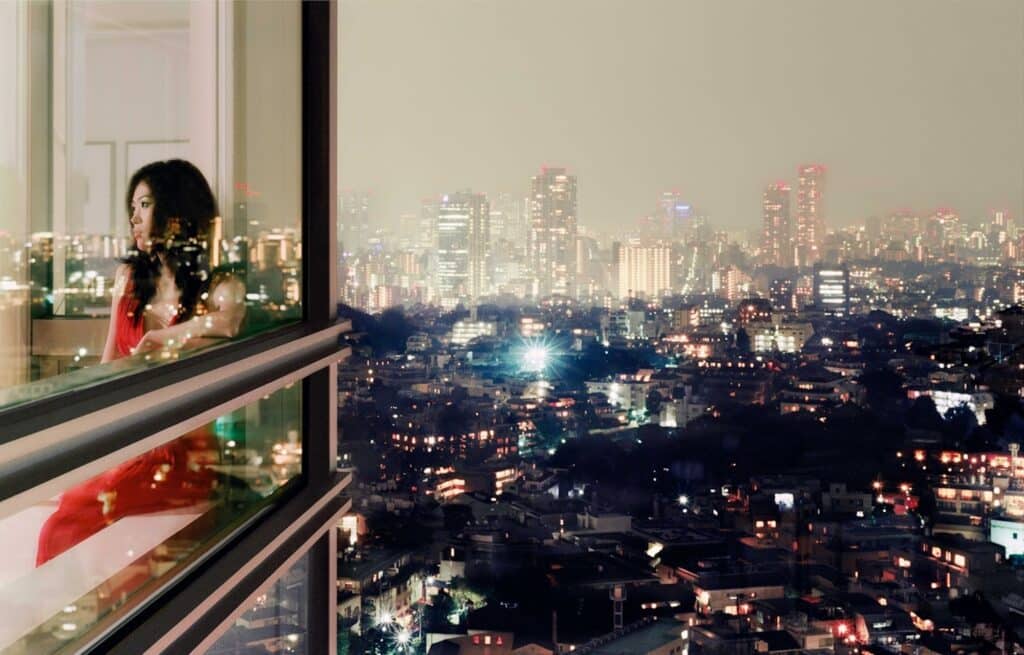
When the walls of the room become a prison, the window offers a hope of escape. Taking up the theme of the “woman in a window,” frequently used in painting, De Lassée stages women caught between lockdown and freedom. “I have seen many more women alone in New York, or more specifically in Manhattan,” she explains. “First, because there are more women than men. And, second, because many have followed their husbands and can’t find a job. They stay home all day.”
Expressing the vulnerability of individuals against the immensity of the city, the nude bodies poetize the enclosed spaces plunged in darkness. But is looking out of a window contemplating the city or confronting one’s own reflection?
When the night falls, the city comes alight
While every city has left a unique trace in her mind, De Lassée remains absolutely fascinated by Shanghai and Beijing, and by China in general: “There is a very kitsch side to these cities, with neon lights of all colors. It’s great for taking pictures.”
At dusk, the facades are bathed in light. Luxurious or modest, old or modern, they define the city’s identity. The urban landscape is constantly changing. “In Shanghai, working-class houses were unfortunately destroyed to make room for apartment buildings.” Tracing the city’s eternal renewal, Inside Views is a testament to what is no longer there.
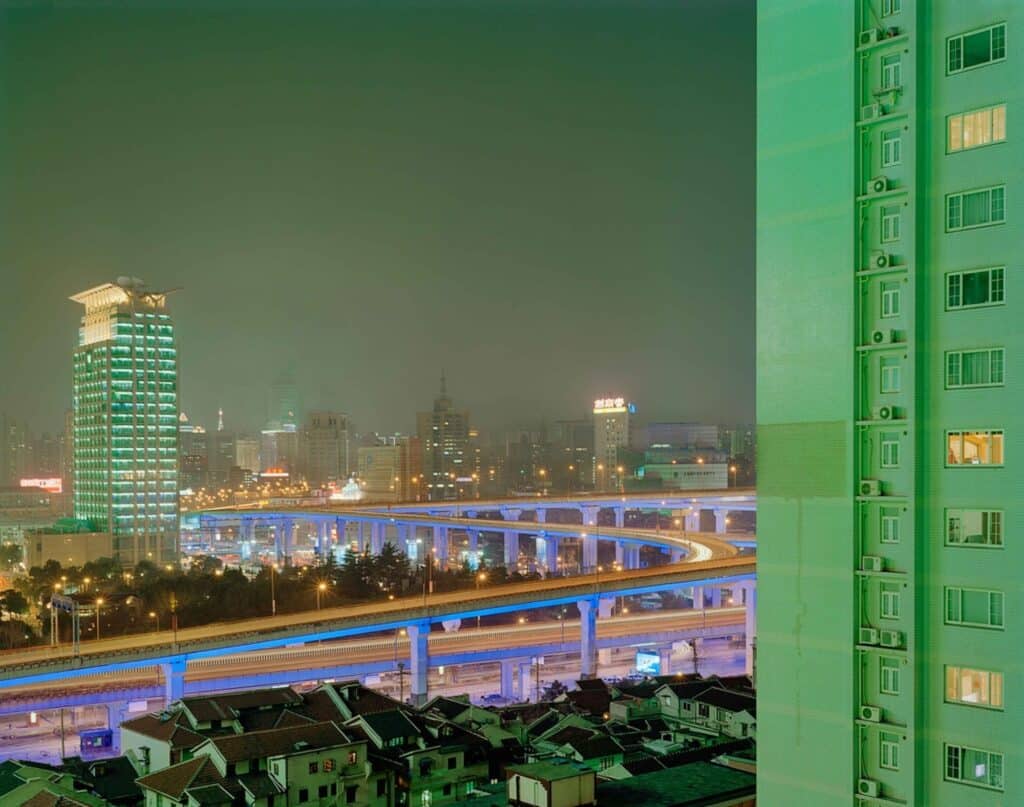
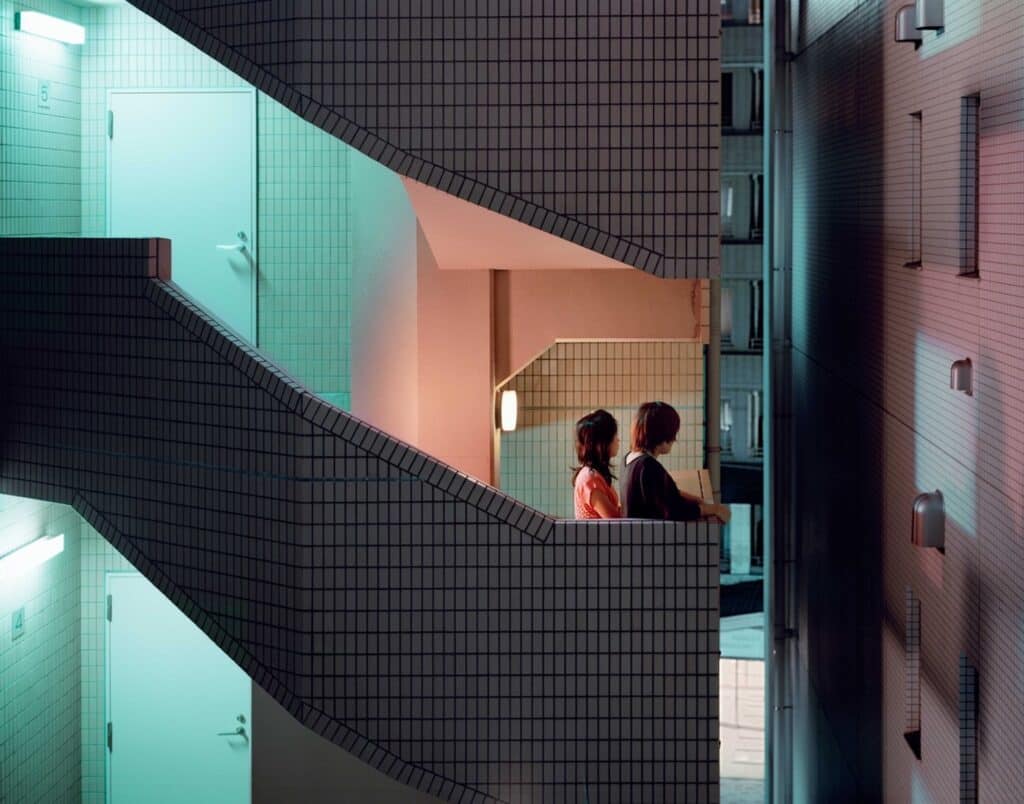
Floriane De Lassée, Inside Views, 2022, €61

